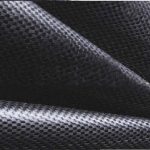Geotextiles Fabric
In the realm of environmental and agricultural engineering, geotextile fabric emerges as a crucial material, offering a blend of functionality and sustainability. This fabric plays a pivotal role in soil management, erosion control, and ecosystem conservation, marking its significance across various sectors.
What is Geotextiles Fabric?
Geotextile fabric is a specialized material made from durable polymers, typically polypropylene. This engineered fabric is designed to interact with soil and enhance its properties for various civil engineering and environmental projects. It comes in multiple forms (woven, needle-punched, and heat-bonded) to suit different applications. Beyond these, geotextile composites and products like geogrids and meshes extend the material’s utility in geotechnical projects.
Features of Geotextile Fabric
- Permeability: Geotextiles allow water to pass through while retaining soil particles, ensuring proper drainage.
- Strength: The fabric’s construction offers impressive tensile strength, increasing resistance to tearing and puncturing.
- Versatility: Geotextiles perform multiple functions: separation, filtration, reinforcement, protection, and drainage – tailored to specific needs.
- Durability: Geotextiles are specially formulated to withstand harsh environments, including exposure to UV light, chemicals, and soil microbes.
Advantages of Geotextile Fabric
- Soil Stabilization: Geotextiles enhance the stability of soil structures, especially in areas with poor soil conditions.
- Enhanced Drainage: They facilitate effective water management, preventing soil saturation and erosion.
- Project Efficiency: Geotextiles often lead to faster project timelines and reduce the need for costly soil replacement.
- Sustainability: Geotextiles help conserve natural resources and minimize environmental impact within construction projects.
Applications
Geotextiles Fabric finds its applications in various sectors, including:
- Agriculture: For soil stabilization, irrigation, and erosion control, enhancing crop performance.
- Environmental Management: In projects aimed at habitat restoration, shoreline protection, and landscape engineering.
- Construction and Infrastructure: As a foundational element in road construction, embankment stabilization, and drainage systems.
Specifications to Consider
While the specifications of Geotextiles Fabric can vary widely depending on the application, it generally includes:
- Material: Polypropylene (other polymers may be used for specialty purposes)
- Type: Woven, needle-punched, and heat-bonded
- Properties: UV resistance, permeability, and tensile strength
- Weight (GSM): Varies based on application requirements
- Custom Options: Reinforcement, lamination, and custom sizing possible
Final Verdict
Geotextiles Fabric represents a key advancement in the intersection of engineering and environmental management. Its ability to address critical challenges in soil stability, erosion control, and infrastructure development makes it an indispensable tool in promoting sustainable practices. Choosing Simplex Chemopack for your Geotextiles Fabric needs ensures access to top-quality materials backed by expertise in the field, positioning your projects for success while contributing to environmental stewardship.
Why Trust Simplex Chemopack for Geotextiles Fabric?
Simplex Chemopack stands at the forefront of geotextile fabric manufacturing, driven by a commitment to quality and innovation. As a leading provider of packing and storage solutions, Simplex Chemopack leverages advanced manufacturing techniques to produce geotextile fabric that meets the highest standards of durability and performance. Our products, including Geotextile Bags, are crafted from premium materials, ensuring reliability and longevity in their applications.
Ready to discuss how geotextile fabrics can support your next project? Call or email us for free consultation at +91 982 322 1119.

